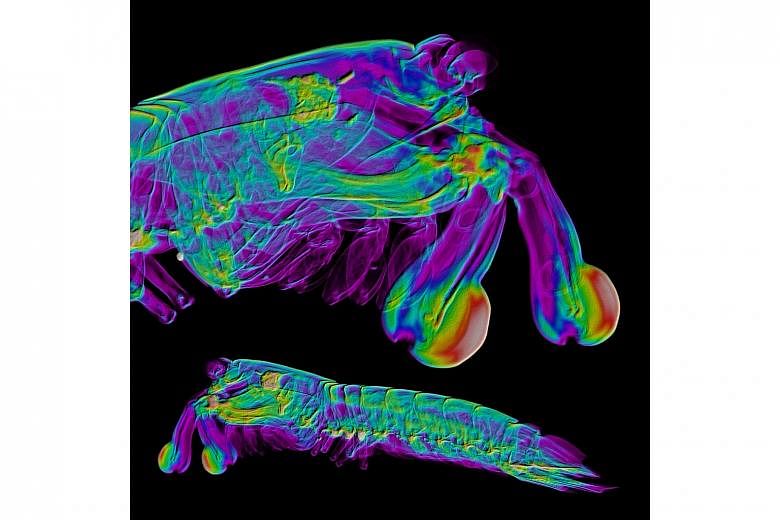This image is an X-ray computed tomography (CT) scan of a stomatopod, commonly known as a mantis shrimp. Mantis shrimps are aggressive crustaceans that hunt shellfish by cracking open their hard shells using tough, impact-resistant and ultra-fast biological "hammers" - which are really their arms - called dactyl clubs.
The mantis shrimp's club-like arms can strike prey at speeds matching those reached by a 5.56mm rifle bullet. The impact can generate a force exceeding 50kg - hundreds of times the shrimp's weight.
Nanyang Technological University scientists have been studying the internal structure and mechanical behaviour of these dactyl clubs, with the aim of producing a new class of ceramic materials which would be resistant to fractures and impact.
These substances can be used as protective materials in, say, bulletproof vests or anti-scratch cases for high-end watches.
The scientists have found that the shrimp's clubs are able to withstand strong blows because they have ceramic-like crystals - called fluorapatite - that move and rotate when struck, absorbing the impact.
The different colours in the image highlight varying degrees of calcification, with the shrimp's clubs in red meaning the most calcified, and hence the hardest.

